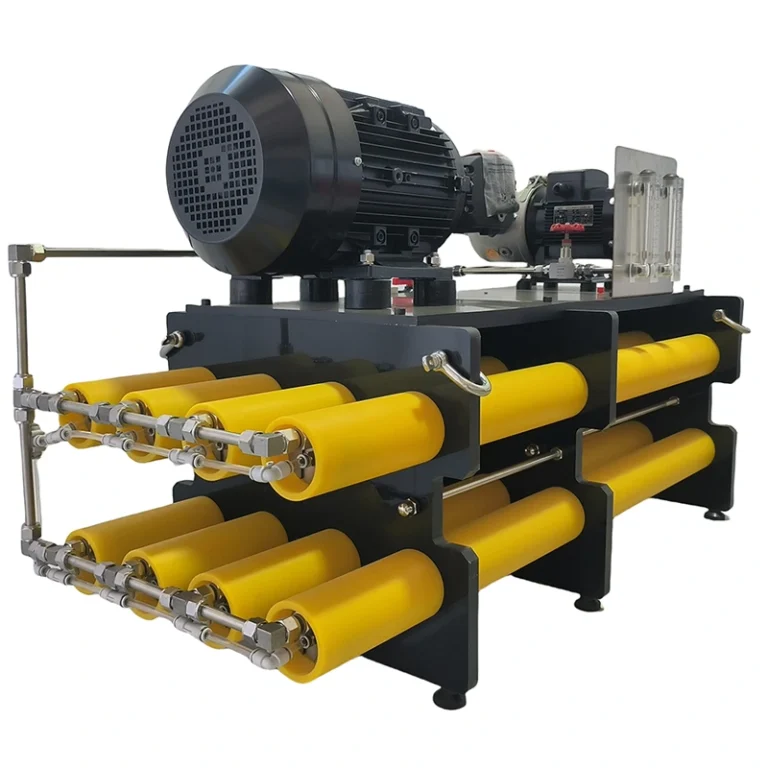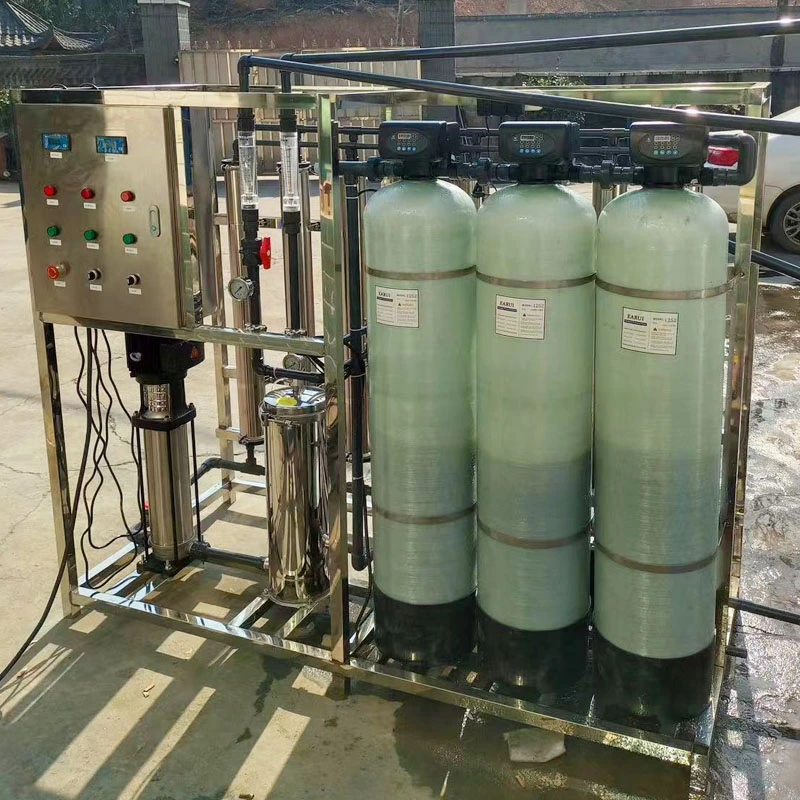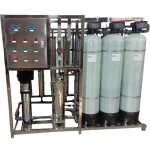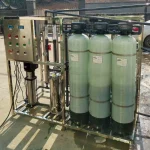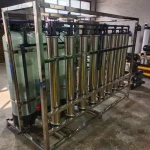BasideWT- Whole Home Water Filtration System & Replacement

Industrial 2000L/H Drinking Water Reverse Osmosis RO Purification Pure Water Treatment System
PRODUCT PARAMETERS
- Product Name: RO System
- Water production Rate: 2000L/H
- Filtration process: Reverse Osmosis Filtration
- Filter Water Quality: Purified Water/pure Direct Drinking Water
- Type: Pure Water Treatment System
- Processing Type:Reverse Osmosis
- Application:Industrial / Commercial
- Usage: Water Treatment
- Core Components: RO Membrane
- Packing: Standard Exportation Package
Industrial 2000L/H Drinking Water Reverse Osmosis RO Purification Pure Water Treatment System offers unmatched reliability, efficiency, and water quality for industries with high water demands. Its ability to purify large volumes of water quickly and effectively makes it an essential tool for ensuring the safety and quality of water used in production processes.
What is a 2000L/H Industrial RO Water Treatment System?
Let’s break it down. Reverse Osmosis (RO) is a purification process that pushes water through a specialized membrane under high pressure. This membrane acts like an ultra-fine sieve, removing up to 99% of dissolved solids, contaminants, and impurities.
An Industrial 2000L/H Drinking Water Reverse Osmosis RO Purification Pure Water Treatment System is engineered for massive output. The “2000L/H” specification means it produces 2000 liters of permeate (high-purity water) every single hour. That’s 48,000 liters per day—enough to supply a small town or a large bottling line.
However, it’s far more complex than a simple pump and membrane. It’s an integrated ecosystem. Key LSI Keywords like multi-stage filtration, high-pressure pump arrays, stainless steel skid-mounted design, and PLC automated controls
How do you decide the best path forward? The choice is often between patching a problem and solving it.
| Feature | Project A: Outsourced Water & Small Units | Project B: Integrated 2000L/H RO Plant |
|---|---|---|
| Operational Cost | Perpetually high, with volatile delivery fees and rental costs. | Higher initial CapEx, but significantly lower long-term OpEx and predictable costs. |
| Quality & Consistency Control | Limited; reliant on supplier certificates and inconsistent batches. | Complete, verifiable, and absolute control over your own water quality 24/7. |
| Production Scalability | Rigid and slow to scale; limited by logistics and lead times. | Immediate, on-demand production that scales directly with your operational needs. |
| Reliability & Risk | High risk of disruption from supply chain or delivery issues. | Ultimate reliability and security with an on-site, self-contained production system. |
| Return on Investment (ROI) | A perpetual operating expense with no asset value. | A capital asset that appreciates in value by securing and de-risking your operations. |
Key Components of the System
- Advanced Pre-Treatment: This is non-negotiable. Source water first passes through multi-media filters and activated carbon beds. They remove sediments, chlorine, and organic matter that would rapidly destroy the expensive RO membranes.
- High-Pressure Pump Array: The heart of the operation. These industrial-grade pumps generate the immense pressure (often 200-300 psi) required to force water through the semi-permeable RO membranes.
- Reverse Osmosis Membrane: The core filtration process that removes dissolved salts, chemicals, and other contaminants.
- Post-Filtration: Ensures the final product meets required purity standards.
- UV Sterilization: Optional, for disinfecting any remaining bacteria or viruses.
Implementing Your 2000L/H Water Treatment Plant
Deploying such a system is a methodical process. Here’s a simplified guide:
- Comprehensive Water Analysis & Demand Audit: This is the absolute first step. You must test your source water in a certified lab and precisely calculate your facility’s hourly and daily pure water needs.
- System Design & Engineering: Based on the data, engineers design the system, specifying the exact membrane types, pump power, and pre-treatment stages required for your unique application.
- Site Preparation & Utility Integration: Ensure the location has adequate structural support, drainage, electrical supply (often 3-phase power), and feed water connection points.
- Installation & Commissioning: The skid-mounted unit is positioned, connected, and powered on. A specialist will calibrate the PLC controls, flush the system, and test the initial water quality output.
- Staff Training & Handover: Your operational team is trained on daily monitoring, basic troubleshooting, and the scheduled maintenance protocol to ensure longevity.

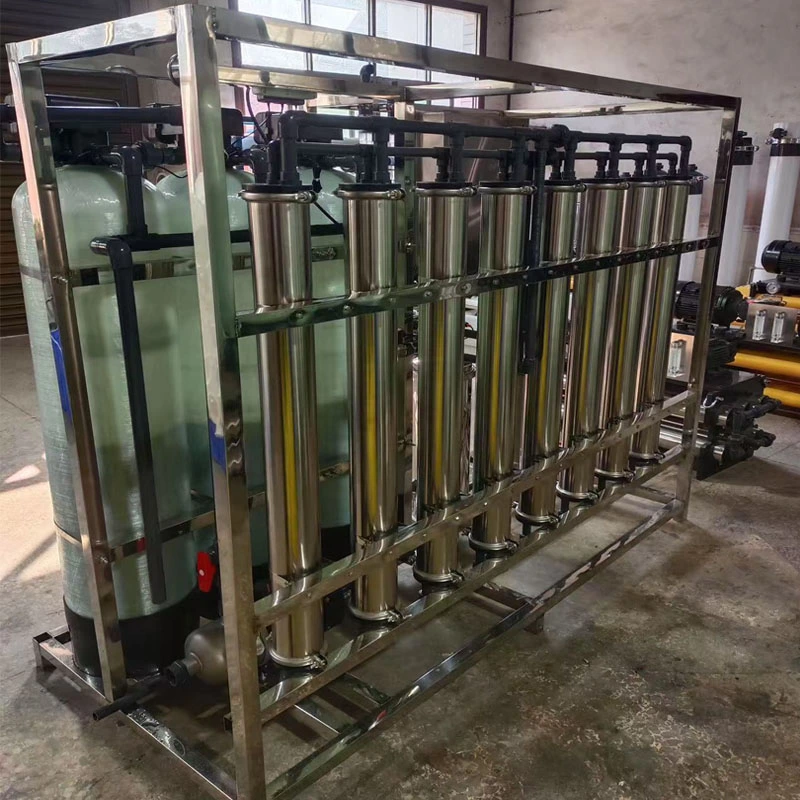
FAQs
Choosing the perfect water treatment system depends on your specific water quality, household size, and needs. We make it easy with our 3-step process:
Water quality testing – analyze your water for contaminants, hardness, and other factors.
Personalized Consultation – Our experts recommend systems based on your results, budget, and water usage.
Customized Solution – From whole-house filtration to targeted solutions (e.g., RO for drinking water, softeners for hard water), we tailor the system to your home.
To determine your water flow rate in gallons per minute (GPM), follow these simple steps:
Prepare for Testing:
- Prepare for Testing:
- Ensure all water fixtures in your home are turned off
- Select the faucet closest to your main water supply line (usually the kitchen sink or an outdoor spigot)
- Conduct the Test:
- Fully open the selected faucet
- Time how many seconds it takes to fill a 1-gallon container
- Repeat the test 2-3 times for accuracy
- Calculate Your Flow Rate:
Use this formula: Flow Rate (GPM) = 60 ÷ Fill Time (seconds)Example Calculation:- If your 1-gallon container fills in 15 seconds
- 60 ÷ 15 = 4 GPM
For more precise measurements or whole-home flow rate analysis, contact our water system specialists. We can help you determine if your current flow rate meets the requirements for any water treatment systems you’re considering.
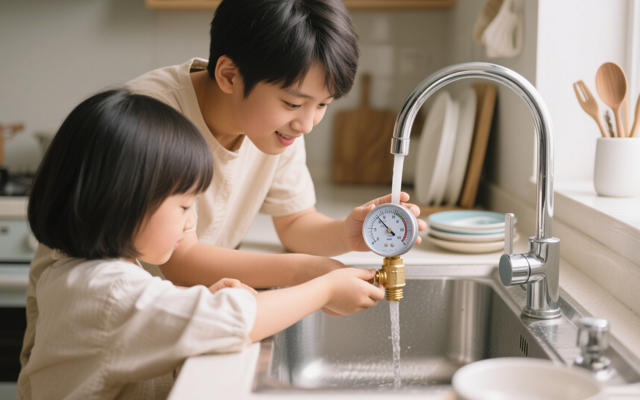
1. Check Multiple Fixtures
Test water pressure at different faucets, showers, and appliances (e.g., kitchen sink, bathroom sink, outdoor hose).
If only one fixture has low pressure, the problem is likely localized (clogged aerator, faulty valve, or pipe issue).
If all fixtures have low pressure, the issue is systemic (main supply, pressure regulator, or water heater).
2. Inspect the Aerator or Showerhead
Unscrew the faucet aerator or showerhead and check for mineral deposits, debris, or rust.
Soak it in vinegar overnight to dissolve buildup, then rinse and reattach.
3. Check the Main Shutoff Valve
Locate the main water shutoff valve (usually near the water meter or where the main line enters the house).
Ensure it’s fully open (turn clockwise to close, counterclockwise to open).
1. Activated Carbon Filters
- Removes:
✅ Chlorine & chloramines
✅ Bad tastes & odors (e.g., sulfur)
✅ Volatile Organic Compounds (VOCs)
✅ Some pesticides & herbicides
❌ Does not remove heavy metals, dissolved minerals, or microbes
2. Reverse Osmosis (RO) Systems
- Removes:
✅ Heavy metals (lead, arsenic, mercury, cadmium)
✅ Dissolved salts (fluoride, nitrates, sulfates)
✅ Microplastics & sediment
✅ Bacteria & viruses (if combined with UV)
✅ Chlorine & chemicals (with carbon pre-filter)
❌ May remove beneficial minerals (can be remineralized)
3. Water Softeners (Ion Exchange)
- Targets:
✅ Calcium & magnesium (hardness)
✅ Low levels of iron & manganese
❌ Does not remove bacteria, chlorine, or heavy metals
4. UV Purifiers
- Kills:
✅ Bacteria (E. coli, coliform)
✅ Viruses (rotavirus, hepatitis)
✅ Protozoa (Giardia, Cryptosporidium)
❌ Does not remove chemicals, metals, or sediment
5. Sediment Filters
- Removes:
✅ Sand, rust, dirt
✅ Large particles & silt
❌ Does not remove dissolved contaminants
6. Whole-House Filtration Systems
Combines multiple methods (carbon + sediment + UV) for broad protection.
- UV: Kills bacteria/viruses but doesn’t remove chemicals or particles.
- RO (Reverse Osmosis): Removes 95–99% of contaminants (heavy metals, dissolved salts) but requires electricity.
- Activated Carbon: Absorbs chlorine, odors, and organic compounds—ideal for pre-filtration.
REQUEST A QUOTE
RELATED PRODUCTS

Custom Deionized Water Cleaning System with Blue Filter Tank for car Wash and window cleaning
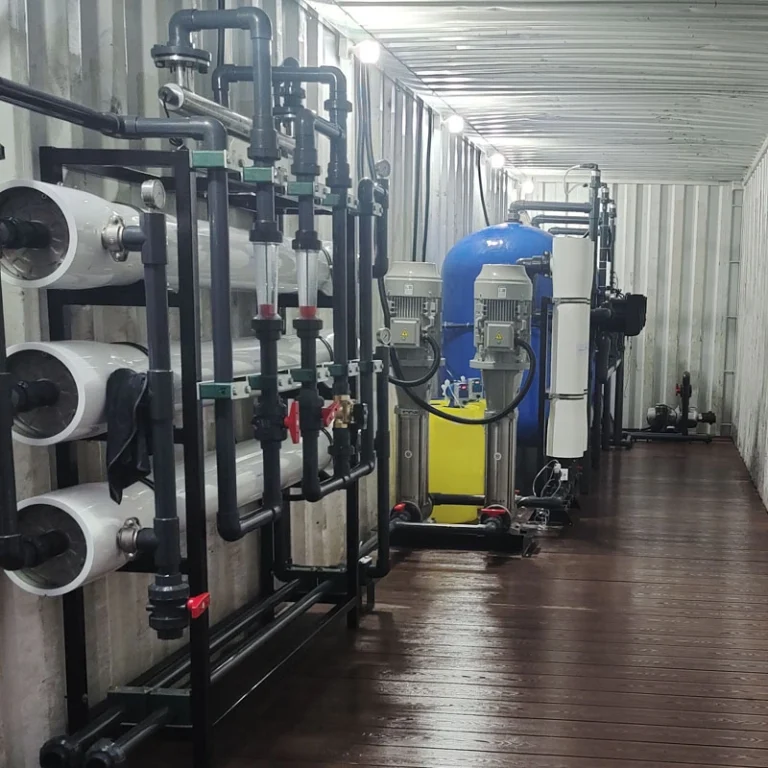
BasideWT Water Softener and Reverse Osmosis System For Commercial Water Treatment
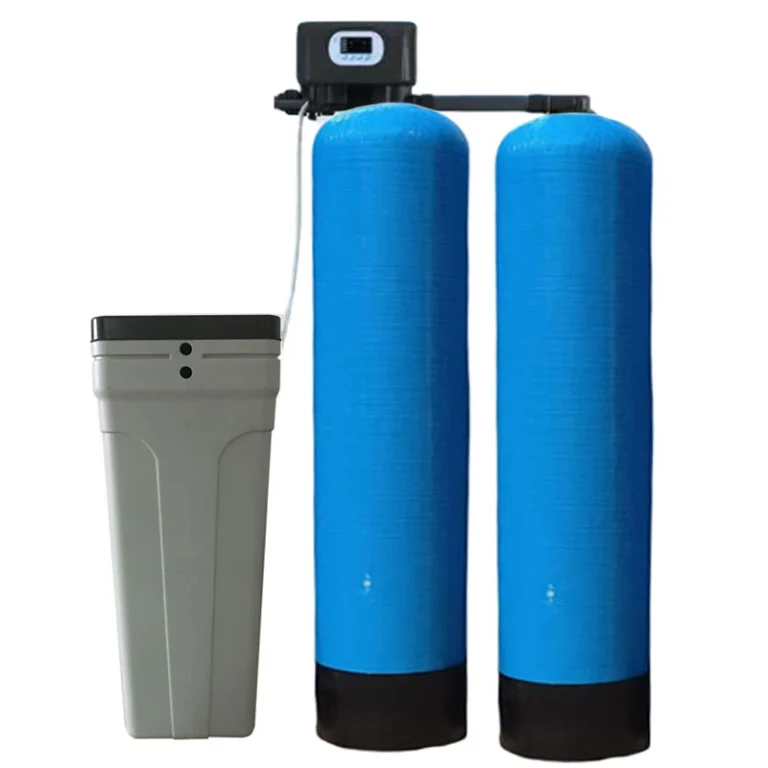
Dual-Tank Continuous Water Softening System: The Ultimate Iron Filter Solution for Well Water
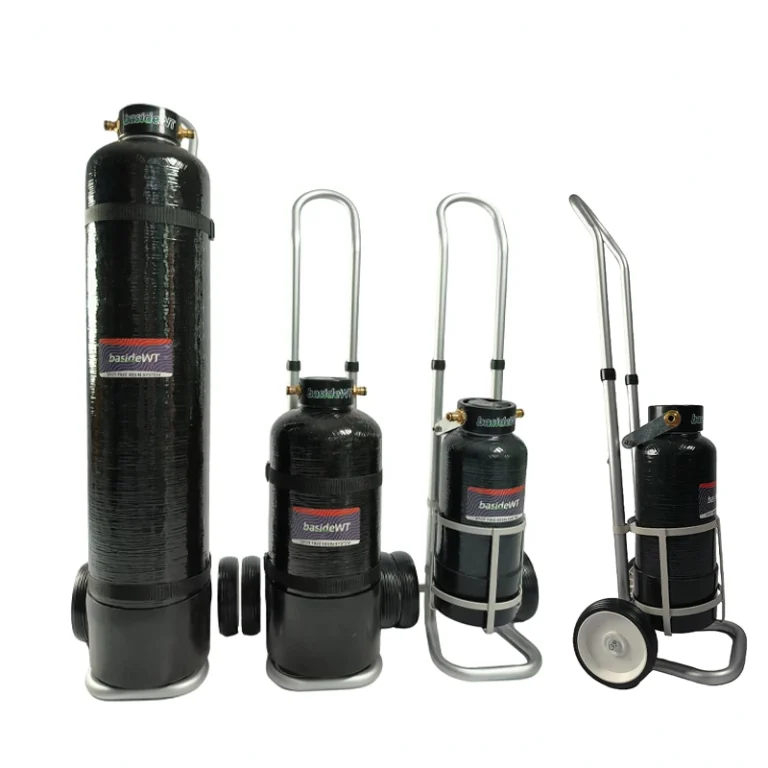
Mobile Spotless Car Wash System for Outdoor RV Vehicles with Deionized Filter

1500L/H Seawater Desalination Equipment Boat Watermaker Salt Water to Drinking Water System
